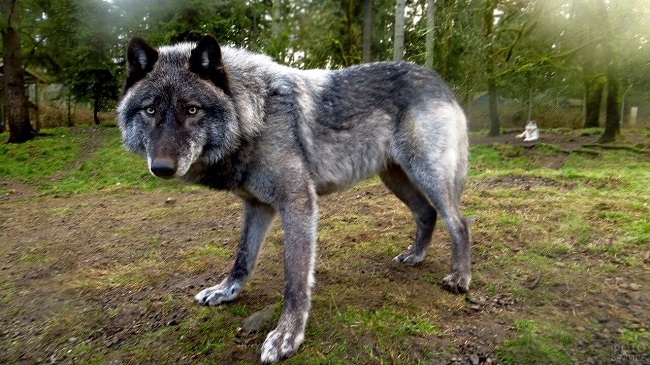Wolves, known for their elegance, power, and the intricate social structures they form, have fascinated humanity for centuries.
Being the largest members of the Canidae family, different species of wolves can be found across the globe, each with unique characteristics.
In this article, we will embark on an exploration of the six largest wolf species that roam our world today.

The 6 Largest Wolf Breeds
Here are some of the largest wolf breeds:
Read Also:
1. The Gray Wolf (Canis Lupus)
The Gray Wolf, also known as the Timber Wolf, is the most common and the largest wolf species. Adult males can weigh between 70 to 145 lbs (32 to 66 kg) and stand about 26 to 32 inches tall at the shoulder. Known for their adaptability, they inhabit a variety of ecosystems across North America, Europe, and Asia.
2. The Arctic Wolf (Canis Lupus Arctos)
A subspecies of the Gray Wolf, the Arctic Wolf, is adapted to the harsh Arctic environment. These wolves can reach a similar size to the Gray Wolf, but their thick white fur, shorter ears, and longer canines distinguish them.
3. The Eurasian Wolf (Canis Lupus Lupus)
The Eurasian Wolf, found across Europe and Asia, is one of the largest wolf subspecies. Males can weigh up to 154 lbs (70 kg) and boast a coat varying from grey to red or brown, depending on their habitat.
4. The Alaskan Interior Wolf (Canis Lupus Pax)
The Alaskan Interior Wolf, found in Alaska and western Yukon, is notable for its size and light-colored fur. Adult males can weigh up to 143 lbs (65 kg) and stand up to 36 inches tall.
5. The Mackenzie Valley Wolf (Canis Lupus Occidentalis)
Also known as the Northwestern Wolf, the Mackenzie Valley Wolf is one of the most massive wolf subspecies. Males can weigh up to 175 lbs (79 kg) and stand up to 32 inches tall. These wolves inhabit the Mackenzie River Valley hence their name.
6. The Tundra Wolf (Canis Lupus Albus)
The Tundra Wolf, native to Russia’s tundra and forest zones, is another large subspecies. Adult males can weigh up to 100 lbs (45 kg), distinguished by their thick, long, and light-colored fur.
Wolves: Keystones of the Ecosystem
Wolves play a crucial role as apex predators in their respective ecosystems. Their hunting activities help control the population of herbivores, preventing overgrazing and ensuring a balanced ecosystem.
For instance, the reintroduction of the Gray Wolf in Yellowstone National Park led to more diverse plant and animal life.
The Social Structure of Wolves: Pack Dynamics
Wolves are known for their complex social structure. They live in packs, usually consisting of an alpha male and female, their offspring, and other subordinate members. These highly organized packs work together during hunts and protect their territory from rival packs.
The Communication of Wolves: Beyond Howling
Contrary to popular belief, wolves use a wide range of vocalizations beyond the iconic howl for communication.
They use growls, barks, and whines to convey different messages within the pack. Body language is also vital in their communication, expressing dominance, submission, or playfulness.
The Threats Wolves Face: Human Impact and Conservation Efforts
Many wolf populations worldwide are threatened due to habitat loss, hunting, and conflicts with humans over livestock. However, numerous conservation programs aim to protect these magnificent creatures and their habitats.
Successful examples include the reintroduction of Gray Wolves to Yellowstone National Park and the protected status of the Arctic Wolf.
Read Also:
Conclusion
The remarkable diversity among the largest wolves worldwide underscores their adaptability and the essential role they play in their respective ecosystems.
Their unique characteristics, from their varied sizes to their striking coats, are an emblem of the beauty and diversity of wildlife.
These species remind us of the importance of conserving these majestic creatures and the habitats they roam. By protecting them, we are preserving a part of the rich tapestry of life on Earth.
While the size of these wolves can seem impressive or even intimidating, it is essential to remember that wolves generally avoid human interaction and pose little threat to human safety.
They are more threatened by us through habitat loss, persecution, and dwindling prey populations than we are by them. Their preservation is an important goal for maintaining the balance in our global ecosystems.
























